A Guide to Camping With Infants and Toddlers
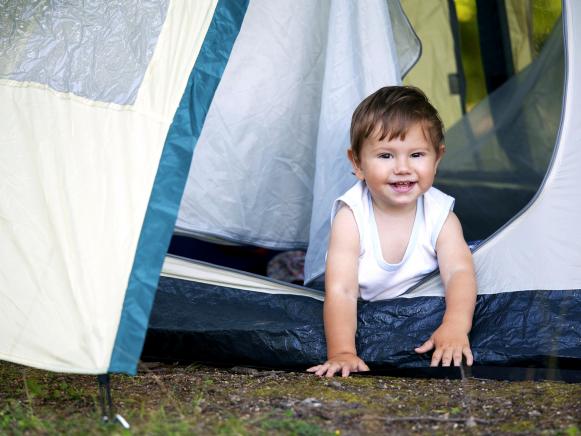
Nikola Miljkovic / iStock / Getty Images Plus
There seems to be 2 schools of thought regarding camping with infants and toddlers. The first, fairly common response to the idea is one of trepidation, even dread (i.e., "Yikes, why would you put yourself through that?). But other folks are much less horrified and have this advice: If you enjoy camping and nature, don't be intimidated to bring infants and toddlers with you. Yes, it will be more challenging than it used to be, but isn't life?
Of course, packing up the car and heading into the woods today is certainly not as difficult as it was even 10 years ago. Mobile phones make emergencies much less frightening and gear concepts like child backpacks and portable pack n' play cribs make corralling the little ones a little less stressful.
Lori Schilling-Davis, a flight attendant with American Airlines, has been camping with her two children since they were 3 years and 10 months old. Logan is now 7, Delaney is 4, and she says she's just reserved their favorite Lake Tahoe, NV, campsite for Logan's camping birthday party (his idea).
Schilling-Davis says the hardest age for her was when the kids were crawling. "Take a pack n' play," she advises. "Otherwise it's just dirt - they're eating dirt, sniffing dirt up their noses." She says the pack n' play serves 2 purposes: a bed for sleeping and a playpen where they can watch what's going on around camp.
David Deitel, a buyer with "Sierra Trading Post" (a discount outdoor clothing and gear catalog), recently took his two girls, ages 23 months and 6 weeks, to Rocky Mountain National Park in Colorado. He stresses good preparation as a key to success. "It takes a lot of planning," he says, "but it's worth it."
Dr. Charles Shubin, director of Children's Health Center at Mercy FamilyCare in Baltimore, MD, doesn't discourage camping with young children, but he wants to make sure parents understand what they're getting into before they go. "Kids don't tolerate changes in environment as well as we do," he cautions. "They can get disoriented and anxious." But he concedes, "If the adults are excited, then the kids will pick up on it."
Dr. Shubin, Schilling-Davis and Deitel passed on their wisdom for getting outdoors with young kids. Children will absorb your enthusiasm, so pack up the car and take a hike.
No parent with young children leaves the house without their bulging bag of "necessities." A camping trip should be no different. Research your destination and plan for all eventualities. Deitel recommends making lists of everything you'll need and overplanning.
"Obviously you need to bring a fair amount of stuff," he says. Pack carefully, even excessively. You can stuff your car as full as you like. Will there be any grocery stores near your campsite? If not, either choose another campground or make sure you have every last diaper you think you might need.
Pick a destination within a reasonable distance from home - you know how long your child can sit in the car. Make sure to give yourself plenty of drive time and arrive at your destination long before dark. Starting your trip with a tired, screaming kid and no daylight to set up camp is no way to begin a vacation.
Look for campgrounds with amenities like flush toilets and potable running water, or rent a room or cabin. Some national parks have kid-friendly resorts within their boundaries and many rent small cabins. Other parks and recreation areas are located near strategically placed motels.
Deitel and his family opted for a motel, cutting out a whole mess of issues involved in actually setting up a campsite. Schilling-Davis and her family, on the other hand, have always chosen to pitch a tent. While I think she's daring, she's not crazy. Her favorite Lake Tahoe site is minutes from the bustling town of Stateline, where they've even ordered delivery pizza for a birthday party.
For crawlers and early walkers, a pack n' play is a necessity if you're sleeping outdoors says Schilling-Davis. It functions as a familiar bed for sleeping and as a playpen while the adults work or hang out around camp. Schilling-Davis also recommends a clamp-on booster seat, another double-duty item useful for eating as well as a safe spot to plop kids down.
Deitel and Schilling-Davis both recommend a toddler backpack and/or infant front carrier for hiking. The backpack keeps the toddler on your back and out of trouble and ensures you're not carrying a tired hiker most of the way back in your arms. Make sure you choose a pack with an effective safety harness to keep your child from sliding out when you bend over. Deitel recommends Kelty, a company that carries several models.
Deitel also recommends using a hydration-pack system like Camelback for water. As the liquid drains, the bladder shrinks, so you're not carrying the extra bulk and weight of an empty water bottle.
Dr. Shubin stresses the importance of the first-aid kit, but also advises keeping it simple: bandages, Curel or other alcohol-based cleansing product, sunscreen (for children more than 6 months old), bug spray with 10% DEET (not for infants).
Shubin says the most common condition he treats in children who have spent time outdoors is contact dermatitis from touching irritating plants like poison ivy. Schilling-Davis says the worst injury she's dealt with in four years of camping is a bee sting.
Remember, kids need to eat regularly and sleep on their schedule. Deitel recommends making sure kids sleep at their usual bedtime. And don't forget naps. Can your child nap in a front carrier or backpack? Great. Otherwise, make sure to plan separate morning and afternoon activities.
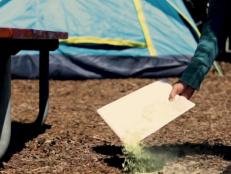
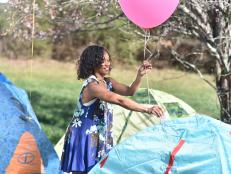
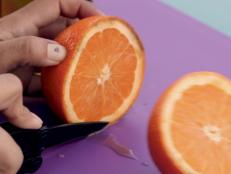
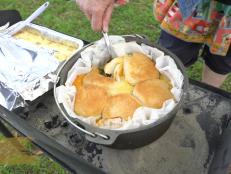
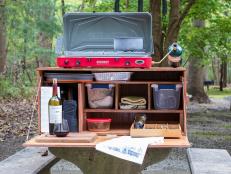
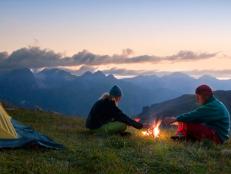

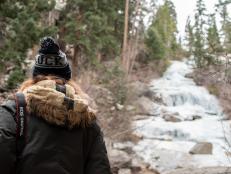
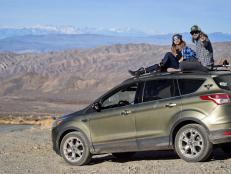
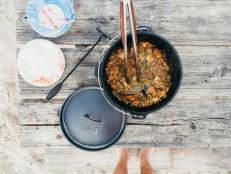

















.jpg.rend.hgtvcom.231.174.suffix/1674758726773.jpeg)











